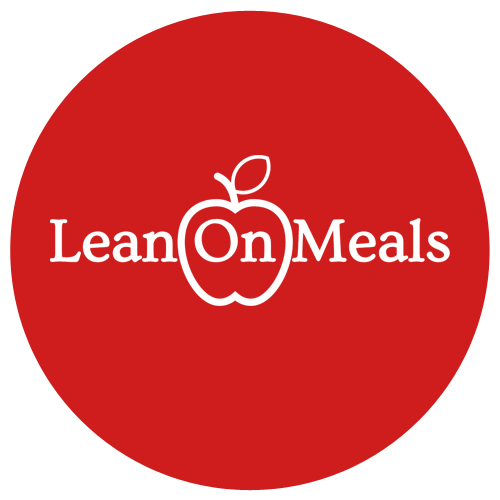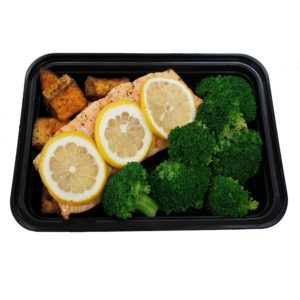Eating Healthy on a Budget.

Yes, you can eat well on a budget! People often cringe over the extra cost of organic foods, fresh produce, or quality meats, but in reality with a little advance planning, we can be frugal and maintain clean healthy eating at the same time. It all starts in your kitchen.
Here’s what you need to know:
- If you fail to plan, you plan to fail
- Find the deals
- Shop Smart
If you fail to plan, you plan to fail
Before you go to the grocery store, try to organize your fridge, drawers, cabinets and anywhere else you store your food in the kitchen. By doing this you can visualize what you really need. This will help you plan a shopping list with the exact ingredients. So you don’t get swept up in the sales at the store. Another great idea is making a meal plan for your week. This is a good opportunity to practice your portion control. You may already know how much you eat per meal, so calculating how much food you need is simple. This allows you the opportunity to make food last longer and keep your waistline in check.
Look for recipes that are selective with what you choose to cook and you may be able to save some money on your grocery budget. Once you do this, you won’t end up with too much food or undesired food products you didn’t plan beforehand.
Find the deals
The next step is to check out flyers, coupons, and websites for deals. Nowadays you can easily download some apps to your smartphone for free, like Flipp, reebee etc. These apps also compare the prices among stores. You can adjust your meal plan and shopping list according to the products that are on sale. If you planned on green beans with Tuesday’s dinner, but broccoli is on sale and beans are not, you can decide on-the-fly to substitute with broccoli for this week. You’re still getting your greens, but saving a little money.
Consider buying things in bulk when available and on sale. Freeze the food in smaller, individual sized containers for later use. Also plan the day and time of your arriving to the store. Some supermarkets might have specific sale days or reduced items in the evening. For example, some grocery stores offer 15% off every first Tuesday of the month.
Shop smart
Now that you are in the grocery store, try to buy fresh vegetables and fruit when they are in season. These are usually less expensive at this time and you can freeze extras for later. In some Canadian cities where we have snow and below zero temperatures for several months of the winter, buying local and in-season can be a challenge. But frozen veggies and fruit are a very good alternative, as they are usually frozen from fresh with no added ingredients.
Consider buying pre-cut vegetables such as broccoli, squash, and mushrooms to save some prep-time in the kitchen. Meat could be more expensive than fruits and vegetables. A cheaper alternative, and good source of protein, are nuts, tofu, beans, lentils, and other legumes.
You may also consider some less expensive and generic brands. This can be an easy way to save money as well. At the till, pay with cash instead of debit or credit cards. This will be the most helpful in sticking to your budget.

Conclusion
Once you are home, here are some tips you may want to consider while you are doing your food prep:
- Chop extra fruit and vegetables when preparing meals so you have extra for lunches, snacks, and meals the next day.
- Save the water from cooking veggies for use in soups or stews, or to use in smoothies. This water has many nutrients that have been leached out from the vegetables.
- Save run-off liquid from cooking mushrooms to for in a sauce.
- When buying in bulk, you can transform a case lot of tomatoes into a tomato sauce and freeze it. When green onions or celery are on sale, buy a bunch. Chop it up and put in sandwich baggies to be pulled out of the freezer for use in soups and such later on.
- Cook twice the chicken or ground beef you need and either keep extras in the fridge to make chicken salad, chili, and spaghetti sauce the next day or freeze them for later. I’ve even freezed whole baked chicken breasts, and am delighted that they don’t acquire an odd texture when thawed out.
- Reorganize the fridge regularly. Try to keep items that are quick to spoil in plain sight instead of hidden in the back or tucked away in drawers.
Finally cook on the weekend. You can freeze-meals for the upcoming week like soups, stews, casseroles, pasta dishes, chili, and yes even chicken breasts! These will come in handy, especially on busy days.
Now what should I do with the leftovers?
Here are some ideas:
- Prepare casseroles and salads from potatoes, pasta and rice leftovers. Also you may transform these into soups and desserts.
- Transform vegetables leftovers to a pureed soup.
- Use up chicken and vegetables leftovers to create a tasty Chicken pot pie.
- Soften stale rolls in vegetable or beef broth before using them in meatballs or meatloaf to make the dish really appetizing.
- Turn the rolls or bread into croutons for salads or soups.
- Prepare a day-old roast chicken or turkey breast on a green salad, with some combination of vegetables, chickpeas, trail mix, berries and some cheese.
- Cooked grains leftover (quinoa, rice) are a good, nutritious and filling addition to any soup.
Summary of tips to eating healthy on a budget:
- Organize your kitchen (fridge, pantry) so you know what you already have and what you need.
- Plan your meals and snacks in advance for the upcoming week, along with portion sizes you’ll need.
- Multiply by your serving sizes and only buy the amount you need.
- Check out flyers or coupons and make substitutions when possible.
- Buy in bulk when items are on sale. Freeze items for later use.
- Buy frozen instead of fresh to save money.
- Do food prep on the weekend or other day when it works best for you, so you’re not tempted to reach for unhealthy choices or overspend on quick food when you’re hungry and rushed.
- Save and use everything you can from quality food items, including the nutrient-rich water from cooked vegetables.
Yvette Styner, CHN
Certified Holistic Nutrition
NPAA Elite Pro Figure-Fitness Athlete










